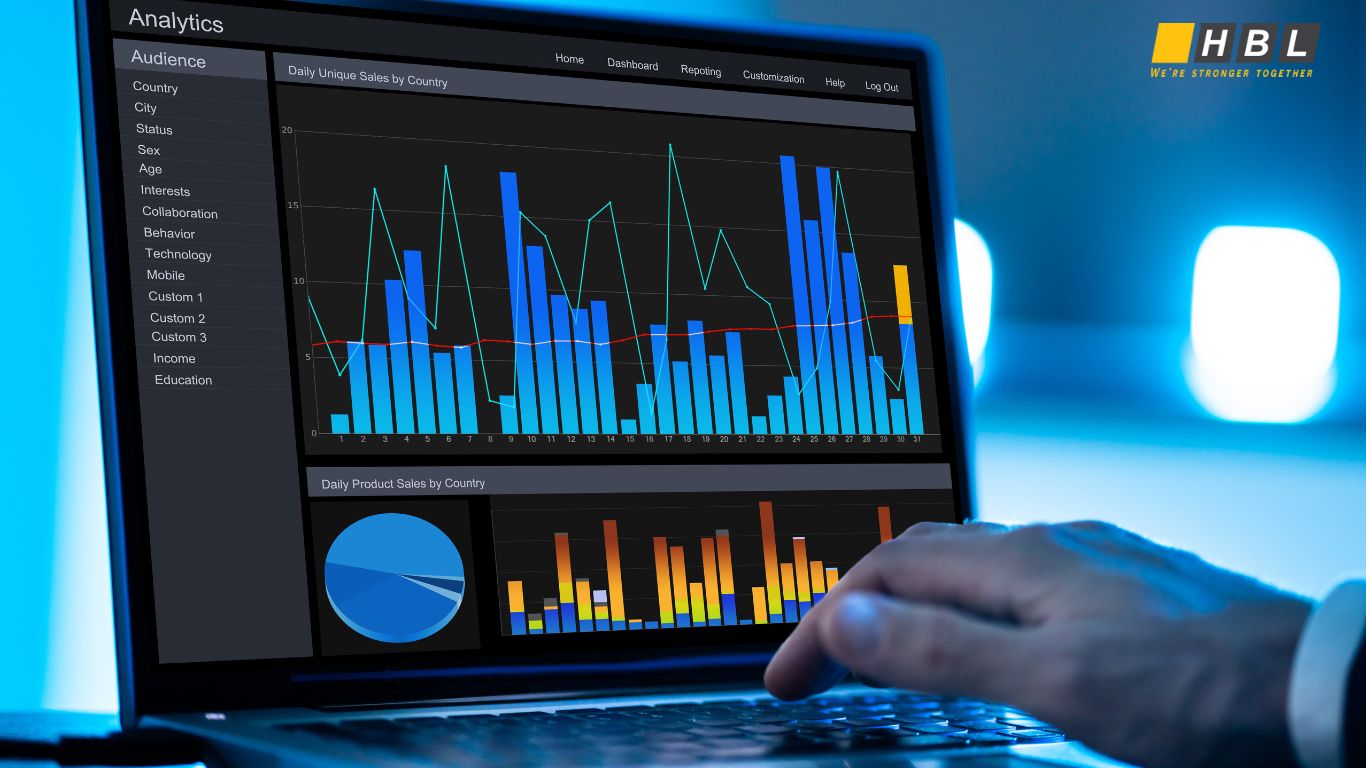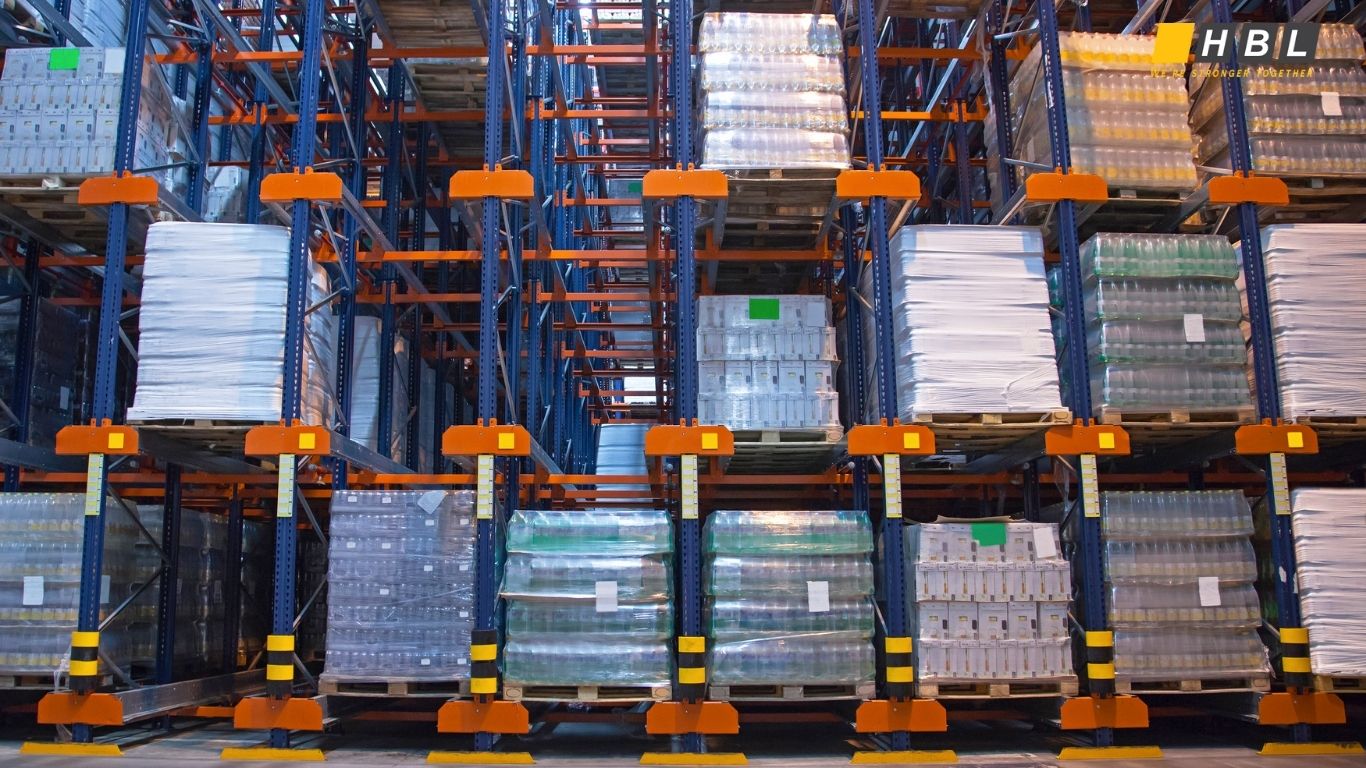In today’s data-driven world, businesses are collecting more information than ever before—but simply gathering data isn’t enough. To turn raw data into actionable insights, organizations need a structured, scalable, and efficient way to store and analyze it. That’s where data warehouse solutions come in. These powerful platforms help unify data from multiple sources, support complex queries, and enable real-time analytics that drive smarter decisions. In this guide, we’ll explore what a data warehouse solution is, why it’s essential for modern businesses, and how to choose the best one for your needs in 2025 and beyond.
1. Introduction to Data Warehouse Solutions
1.1 What Is a Data Warehouse Solution?
A data warehouse solution is a specialized system designed to collect, store, and analyze data from multiple sources in a centralized repository. Unlike operational databases that are optimized for day-to-day transactions, data warehouses are structured for complex queries, historical data analysis, and large-scale reporting. These solutions typically integrate with tools for business intelligence (BI), enabling users to extract valuable insights that support strategic planning and data-driven decision-making.

1.2 The Role of Data Warehousing in the Age of Big Data
In today’s digital landscape, organizations are generating massive amounts of data—from customer interactions and sales transactions to social media engagement and IoT devices. Traditional systems struggle to manage the velocity, volume, and variety of this information. That’s where modern data warehouse solutions come into play. They not only consolidate disparate data sources but also support real-time analytics, machine learning integration, and scalable performance. In the age of big data, data warehousing is no longer optional—it’s a competitive necessity.
1.3 Key Benefits of Implementing a Data Warehouse
Implementing a robust data warehouse solution offers numerous advantages:
- Centralized Data Access: Combines structured and semi-structured data into one accessible location.
- Improved Decision-Making: Enables more accurate and timely business insights through advanced analytics.
- Enhanced Data Quality: Standardizes data formats and removes inconsistencies across systems.
- Scalability and Performance: Supports growing data needs without sacrificing speed or efficiency.
- Strategic Advantage: Equips businesses with the intelligence needed to stay ahead in competitive markets.

2. Why Businesses Need a Data Warehouse Solution
As organizations grow, so does the complexity of their data. Sales platforms, marketing tools, CRM systems, and internal applications all generate valuable information—but without a unified system to manage it, data becomes fragmented and underutilized. A data warehouse solution addresses this challenge by providing a centralized platform for data storage, processing, and analysis. Here’s why it’s indispensable for modern businesses:
2.1 Data Consolidation
A core function of any data warehouse is to consolidate data from multiple, often incompatible sources. Whether your data lives in spreadsheets, SQL databases, cloud applications, or third-party APIs, a data warehouse aggregates it into a unified format. This eliminates data silos, improves consistency, and makes it easier for teams to work with a single source of truth.
2.2 Enhanced Analytics
With data centralized and structured, businesses can perform advanced analytics with greater speed and accuracy. A data warehouse solution supports complex queries, trend analysis, and predictive modeling—all essential for understanding customer behavior, optimizing operations, and identifying growth opportunities. Many platforms also integrate seamlessly with BI tools like Tableau, Power BI, or Looker to generate powerful, interactive dashboards.
2.3 Improved Decision-Making
Real-time insights and historical trend analysis empower leaders to make informed, data-backed decisions. Instead of relying on guesswork or outdated reports, a data warehouse provides up-to-date analytics that reflect actual business performance. From marketing strategy to supply chain planning, every department benefits from quicker and more accurate information.
2.4 Scalability
As your data grows, your infrastructure needs to grow with it. Modern data warehouse solutions are designed to scale efficiently—especially cloud-based platforms like Snowflake, BigQuery, and Redshift. These solutions offer flexible storage and processing power, so businesses can scale up or down based on demand without overinvesting in hardware or IT resources.
3. Key Features of an Effective Data Warehouse Solution
Not all data warehouse solutions are created equal. While the core function—storing and analyzing large volumes of data—remains the same, the best solutions offer a range of features that enhance performance, flexibility, and user experience. When evaluating options, it’s essential to look for capabilities that align with your business goals and data strategy. Below are the key features that define an effective data warehouse solution:
3.1 ETL Capabilities (Extract, Transform, Load)
A strong data warehouse relies on robust ETL (Extract, Transform, Load) processes. ETL tools extract data from various sources, transform it into a consistent format, and load it into the warehouse for analysis. These capabilities ensure data integrity and make it possible to automate workflows—saving time and reducing the risk of errors.
3.2 Real-Time or Near-Real-Time Data Processing
Today’s business environment demands agility. A data warehouse that supports real-time or near-real-time data ingestion allows organizations to make quick decisions based on the most current data available. This is especially valuable for industries like finance, retail, and logistics where timing can significantly impact performance.
3.3 Scalability and Flexibility
A modern data warehouse solution must be scalable to handle growing data volumes without a drop in performance. Cloud-based platforms are particularly strong in this area, offering elastic compute and storage capabilities that adapt to your business needs. Whether you’re processing gigabytes or petabytes of data, a scalable architecture ensures continuous performance.
3.4 User-Friendly Analytics and Reporting Tools
An effective data warehouse empowers not just data teams, but also business users. Intuitive dashboards, drag-and-drop interfaces, and seamless integration with business intelligence (BI) tools allow non-technical users to access insights without writing complex queries. This democratizes data across the organization and fosters a data-driven culture.
3.5 Security and Access Control
Data is one of your most valuable assets, and protecting it is critical. A high-quality data warehouse solution includes built-in security features such as encryption, multi-factor authentication, role-based access controls, and compliance with regulations like GDPR or HIPAA. These measures help ensure your data is safe from breaches and misuse.
4. Types of Data Warehouse Solutions
When choosing a data warehouse solution, it’s important to consider the different deployment models and architectures available. Each option offers unique benefits depending on the size of your organization, the volume of data you handle, and your long-term business needs. Below are the main types of data warehouse solutions to consider:
4.1 On-Premises Data Warehouse
An on-premises data warehouse is hosted within your organization’s physical infrastructure. This traditional model provides businesses with complete control over their data, hardware, and security protocols. On-premises solutions are ideal for organizations that have stringent data governance policies or need to store sensitive data locally for compliance reasons. However, they often come with higher upfront costs and require dedicated IT staff for maintenance and support.
4.2 Cloud-Based Data Warehouse
A cloud-based data warehouse is hosted on cloud platforms like Amazon Web Services (AWS), Google Cloud, or Microsoft Azure. These solutions are flexible, scalable, and cost-effective, allowing businesses to pay only for the storage and computing power they need. Cloud data warehouses are particularly useful for companies with fluctuating data demands, as they can easily scale up or down based on usage. Popular examples include Amazon Redshift, Google BigQuery, and Snowflake.
Benefits of Cloud-Based Solutions:
- Scalability: Easily handle growing data without hardware limitations.
- Cost-Effective: Pay-as-you-go pricing models help manage costs.
- Managed Services: Cloud providers handle updates, security patches, and maintenance, freeing up your IT team.

4.3 Hybrid Data Warehouse
A hybrid data warehouse combines elements of both on-premises and cloud-based solutions. This model allows businesses to store sensitive or legacy data on-premises while taking advantage of cloud storage for newer data and analytic workloads. Hybrid solutions are ideal for organizations that need flexibility, ensuring that data is accessible and secure in both environments.
Benefits of Hybrid Solutions:
- Flexibility: Manage data across different environments based on needs.
- Customization: Tailor the solution to balance security, cost, and performance.
- Best of Both Worlds: Utilize on-premises security with cloud scalability.
4.4 Modern Data Stack
The modern data stack is an evolving approach that integrates cloud-based data warehouses with a variety of tools for analytics, machine learning, and data processing. This approach often includes tools like Fivetran (for ETL), DBT (for data transformation), and Looker (for business intelligence). A modern data stack emphasizes flexibility, speed, and advanced analytics, enabling organizations to derive insights from large datasets more efficiently.
Key Characteristics of Modern Data Stacks:
- Modular: Choose the best tools for each step in the data pipeline.
- Cloud-Native: Designed for high-performance cloud environments.
- Self-Service: Empower business users and data teams with easy-to-use tools for analysis.
5. Top Data Warehouse Solutions in 2025
As the demand for real-time data analytics and business intelligence grows, several data warehouse solutions have emerged as leaders in the market. These platforms offer scalability, flexibility, and innovative features that make them ideal for businesses seeking to harness the power of big data. Below are some of the top data warehouse solutions to consider in 2025:
5.1 Snowflake
Snowflake is a cloud-native data warehouse solution known for its flexibility, ease of use, and scalability. It provides a fully managed platform that supports both structured and semi-structured data. Snowflake’s unique architecture allows for independent scaling of compute and storage, meaning businesses can scale resources as needed without impacting performance. Snowflake’s ability to handle diverse data formats makes it a favorite for businesses with varied data requirements.
Key Features:
- Separation of compute and storage for optimal cost management.
- Real-time data sharing with other Snowflake users.
- Instant scalability to handle growing data needs.

5.2 Google BigQuery
Google BigQuery is a fully managed, serverless data warehouse that excels in handling large-scale datasets with real-time analytics. Built on Google Cloud’s infrastructure, BigQuery is known for its ability to process petabytes of data quickly and efficiently. Its serverless architecture removes the need for manual resource management, allowing businesses to focus on insights rather than infrastructure.
Key Features:
- Real-time analytics with fast query processing.
- Integrated machine learning for advanced data analysis.
- Pay-per-query pricing that reduces upfront costs.
5.3 Amazon Redshift
Amazon Redshift is a highly scalable and cost-effective data warehousing solution from AWS. It allows businesses to run complex queries and analyze large datasets at high speed. Redshift’s ability to integrate seamlessly with other AWS services makes it a top choice for organizations already using Amazon Web Services. Additionally, Redshift’s automatic scaling ensures that businesses can manage varying workloads without performance bottlenecks.
Key Features:
- Massively parallel processing (MPP) for fast query execution.
- Scalable architecture to meet increasing data needs.
- Cost-effective pricing with on-demand and reserved options.
5.4 Azure Synapse Analytics
Azure Synapse Analytics, formerly known as Azure SQL Data Warehouse, combines big data and data warehousing capabilities into a single unified platform. With support for both structured and unstructured data, Azure Synapse enables businesses to analyze data across data lakes and relational data warehouses. Its integration with other Microsoft tools like Power BI and Azure Machine Learning makes it a comprehensive solution for businesses using the Microsoft ecosystem.
Key Features:
- Unified analytics platform for big data and relational data.
- Seamless integration with Azure services like Power BI and Azure Machine Learning.
- Real-time data exploration for business insights.
5.5 IBM Db2 Warehouse
IBM Db2 Warehouse is an enterprise-grade, cloud-based data warehouse solution that delivers high-performance analytics. One of its standout features is its in-database machine learning capabilities, which allow organizations to run advanced algorithms and models directly within the database. This reduces data movement, improving performance and efficiency for analytics.
Key Features:
- In-database machine learning for predictive analytics.
- High performance for large-scale data processing.
- Integrated with IBM Cloud for seamless cloud deployment.
5.6 Oracle Autonomous Data Warehouse
Oracle Autonomous Data Warehouse is a fully automated, self-driving data warehouse solution designed for ease of use and reliability. It uses AI to handle database management tasks such as patching, backup, and optimization. Oracle’s cloud-native architecture also ensures that the platform is highly available, secure, and scalable, making it an excellent option for businesses seeking automation and reliability.
Key Features:
- Self-driving, self-securing, and self-repairing capabilities.
- AI-powered optimization for performance and cost savings.
- Fully managed service to reduce administrative overhead.
5.7 Databricks Lakehouse
Databricks Lakehouse is a hybrid data platform that combines the best of data lakes and data warehouses. It enables organizations to process, store, and analyze both structured and unstructured data in one unified environment. Databricks’ ability to seamlessly integrate with Apache Spark and its focus on machine learning makes it a top choice for organizations with data science teams.
Key Features:
- Unified architecture for data warehousing and data lakes.
- Integration with Apache Spark for advanced data processing.
- Real-time data processing and analytics.
5.8 Actian Avalanche
Actian Avalanche is a hybrid cloud data warehouse optimized for high performance. It offers a flexible, scalable solution with an emphasis on real-time analytics. Actian’s platform is designed to handle complex queries while providing lightning-fast performance, making it ideal for businesses with demanding data workloads.
Key Features:
- Hybrid cloud architecture for flexibility.
- Optimized for high-performance analytics.
- Real-time data processing for faster insights.
Conclusion
These top data warehouse solutions in 2025 offer businesses a wide range of options depending on their needs for scalability, real-time processing, and integration with existing tools. Choosing the right platform can drive efficiency and business intelligence across an organization, transforming raw data into valuable insights.
Choosing the right data warehouse solution is crucial for any business looking to leverage the power of data in today’s fast-paced, information-driven world. With the growing need for real-time analytics, data consolidation, and advanced business intelligence, selecting a platform that aligns with your organization’s specific needs is more important than ever. From highly flexible cloud-based solutions like Snowflake and Google BigQuery to powerful on-premises options like IBM Db2 Warehouse, there is a wealth of data warehouse technologies to explore in 2025.
As businesses continue to scale and generate more data, investing in the right data warehouse solution will provide a strong foundation for improved decision-making, enhanced analytics, and long-term growth. Whether you need real-time data processing, scalability, or machine learning integration, the solutions discussed in this guide offer diverse capabilities to help you unlock the full potential of your data. By carefully evaluating your company’s requirements and goals, you can select the ideal data warehouse solution that will support your digital transformation journey and help you stay ahead of the competition.
Looking for a smarter way to manage and consolidate your business data?
HBLAB offers tailored Data Warehouse Solutions to help businesses centralize, optimize, and leverage their data for smarter decision-making.

With years of experience delivering data-driven solutions across Australia, Japan, Singapore, and global markets, HBLAB is a trusted technology partner in designing and implementing modern data warehouse architectures. From data integration and transformation to storage and advanced analytics, we support organizations at every step of their digital transformation journey.
Why choose HBLAB for your Data Warehouse Solution?
-
Customized architecture to match your business goals
-
Scalable and secure systems for long-term growth
-
Enhanced data visibility to support strategic decisions
Let your data work for you — partner with HBLAB to build a future-ready data infrastructure.
Read more:
How Website Databases Power the Web — And How to Pick Yours
Top 15 Best Practices for Data Analysis: A Comprehensive Guide
Unlocking Business Success: The Ultimate Guide to Data and Analytics Frameworks




